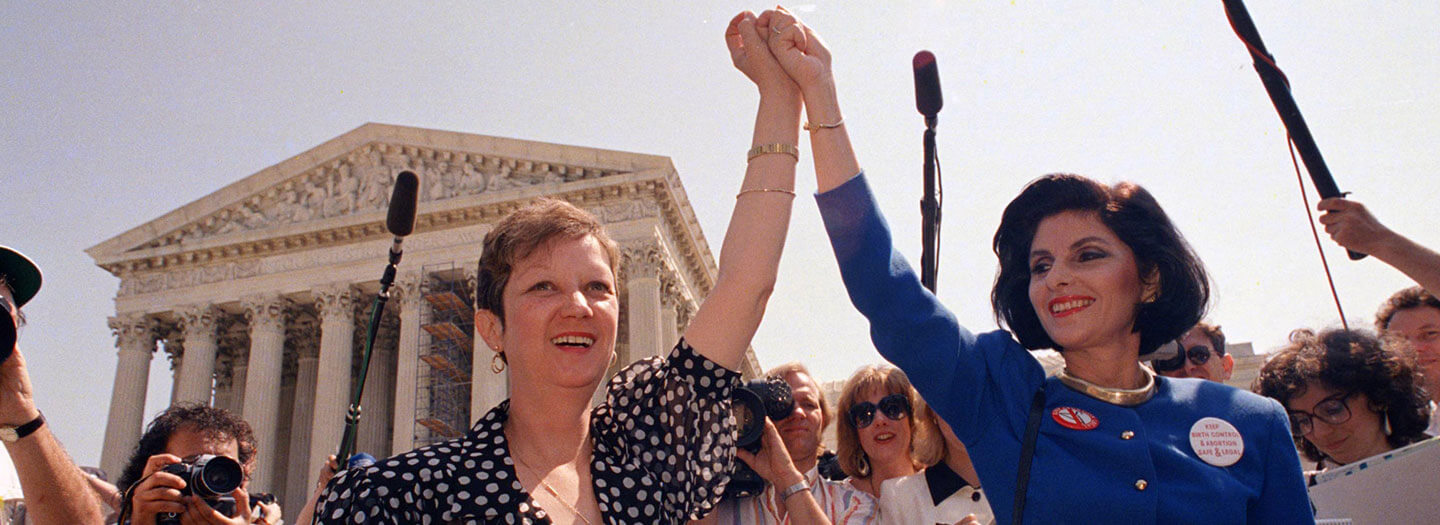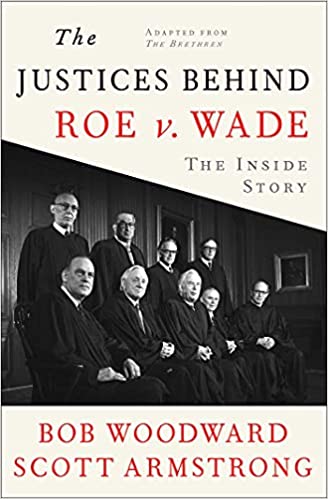
Norma McCorvey, Jane Roe in the 1973 court case, left, and her attorney Gloria Allred hold hands as they leave the Supreme Court building in Washington, DC., Wednesday, April 26, 1989 after sitting in while the court listened to arguments in a Missouri abortion case. The court's decision may overturn the 1973 Roe v Wade case which legalized abortion. (AP Photo/J. Scott Applewhite)
The Roe v. Wade decision legalizing abortion in 1973 began a tragic chapter in American history. But the Supreme Court ruling almost didn’t come down the way it did, when it did.
That’s according to a recently issued paperback, The Justices Behind Roe v. Wade: The Inside Story, adapted from The Brethren by Bob Woodward and Scott Armstrong.
The Supreme Court took on Roe v. Wade to settle a matter of jurisdiction between federal and state courts. But then a similar case not involving abortion established a precedent for federal intervention.
“Suddenly, unexpectedly, the Court found itself faced with the underlying constitutional issue in the abortion cases,” Woodward and Armstrong wrote. “Did women have a right to obtain abortions?”
The Court voted, 7–2, that they did. It was already trending in that direction, but the timing of the ruling seems to be an accident of history.
Why Christians should read this book
The Supreme Court, now with a 6–3 conservative majority, will hear arguments Dec. 1, 2021, about the constitutionality of a Mississippi law restricting abortion, the first of a number of state laws to reach the Court that were passed to challenge Roe v. Wade.
The big takeaway
Any mention of the sanctity of life—or God, for that matter—seems conspicuously missing from the Court’s deliberations, or at least the account written by Woodward and Armstrong. Associate Justice William Brennan, a Catholic, voted with the majority but otherwise took care to keep a low profile to minimize backlash from Catholic groups.
In their own words
- “The Court apparently values the convenience of the pregnant mother more than the continued existence and development of the life or potential life that she carries.” —Justice Byron White in his dissent
- “There is life from the moment of impregnation.” —Jay Floyd, the assistant attorney general of Texas, in his oral argument before the Court
Little-known fact
The Roe v. Wade decision wasn’t the biggest news on the day it was announced, Jan. 22, 1973. Former President Lyndon Baines Johnson died on the same day, and his death dominated the next morning’s newspapers.














